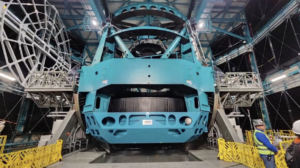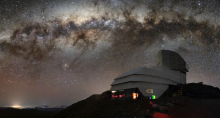We are thrilled to invite you to a special celebration marking a new chapter in astronomy: Rubin Observatory’s First Look and exciting new era of discoveries at the University of Washington!
This milestone represents over two decades of dedication and collaboration from the global Rubin community. We are especially proud to honor the University of Washington Rubin Team, whose leadership and involvement as one of four founding institutions, have been instrumental in bringing this vision to life.
The DiRAC Institute is thrilled to host this event, celebrating UW’s pivotal role and inviting the Seattle community to share in the excitement of discoveries to come.
This is more than an astronomy event — it’s a celebration of human curiosity, collaboration, and imagination. Whether you’re a student, researcher, space enthusiast, or simply someone who looks up at the night sky in wonder, you’re invited to be a part of this historic moment.
REGISTER TODAY HERE
June 26, 2025
7:00 PM-8:30 PM
UW Kane Hall (KNE) 130
Speakers
Prof. Zeljko Ivezic: Professor Željko Ivezić of the University of Washington has been associated with Rubin Observatory since its inception in the early 2000’s (then called LSST Project). As LSST Project Scientist from 2004 to 2021, Željko has chaired the LSST Project Science Team and played a major role in both internal and external reviews of the project. In 2022, he became Director of the Rubin Observatory Construction Project. Scientifically, Željko’s expertise is in survey astronomy in a variety of fields ranging from solar system science to studies of the structure of the Milky Way and cosmology.
Prof. Mario Juric: Prof. Mario Juric is the co-director of UW’s Institute for Data-intensive Research in Astrophysics and Cosmology (DiRAC) and Principal Investigator (PI) of UW’s contribution to Rubin Observatory construction and operations. He has been involved with Rubin since 2008, including defining Rubin’s data products and leading the multi-institutional Rubin Data Management team through R&D and early construction. Prof. Juric’s team at UW is responsible for scanning the ever-changing sky with Rubin: from detecting the most energetic explosions in the Universe, to discovering asteroids that could potentially be on a collision course with the Earth.
Prof. Andy Connolly: Professor Andy Connolly is the Director of UW’s eScience Institute, and a professor in the Department of Astronomy. Professor Connolly studies cosmology and the formation of structure within our universe using large astronomical surveys ranging from the Sloan Digital Sky Survey to the Legacy Survey of Space and Time (LSST). He has been involved in the design, construction, and commissioning of Rubin since 2006 and currently works on the Active Optics System that ensures that the images from the Rubin Observatory will be sharp and clear. He leads LINCC Frameworks, a program supported by Schmidt Sciences to develop the software and tools that will make science discoveries possible at the scale of the Rubin data. Beyond his scientific research, Professor Connolly is interested in using technology to increase access to scientific data and to improve the educational experiences of students.

About Vera C. Rubin Observatory
High in the Chilean Andes, the NSF–DOE Vera C. Rubin Observatory is a next-generation facility named after astronomer Vera Rubin, whose work provided key evidence for dark matter. Jointly funded by the National Science Foundation and the U.S. Department of Energy, Rubin is set to transform our understanding of the Universe.
Its 8.4-meter Simonyi Survey Telescope, featuring the world’s largest digital camera, will scan the southern sky every few nights for ten years—creating the most detailed time-lapse of the night sky ever captured.
Rubin data will deepen our understanding of dark energy and dark matter, trace the history of our solar system, detect asteroids and new worlds, and uncover cosmic phenomena we’ve yet to imagine.
UW DiRAC Institute
The DiRAC Institute is an interdisciplinary research center at UW focused on data-intensive astronomy. Established in 2017 with founding support from the Charles and Lisa Simonyi Fund for Arts and Sciences, and additional support from Janet and Lloyd Frink, NSF, WRF, U.S. Department of Energy, B612 Foundation, Heising-Simons, and Breakthrough Listen – the DiRAC Institute will help us make sense of the discoveries emerging from Rubin and the next generation of telescopes.
